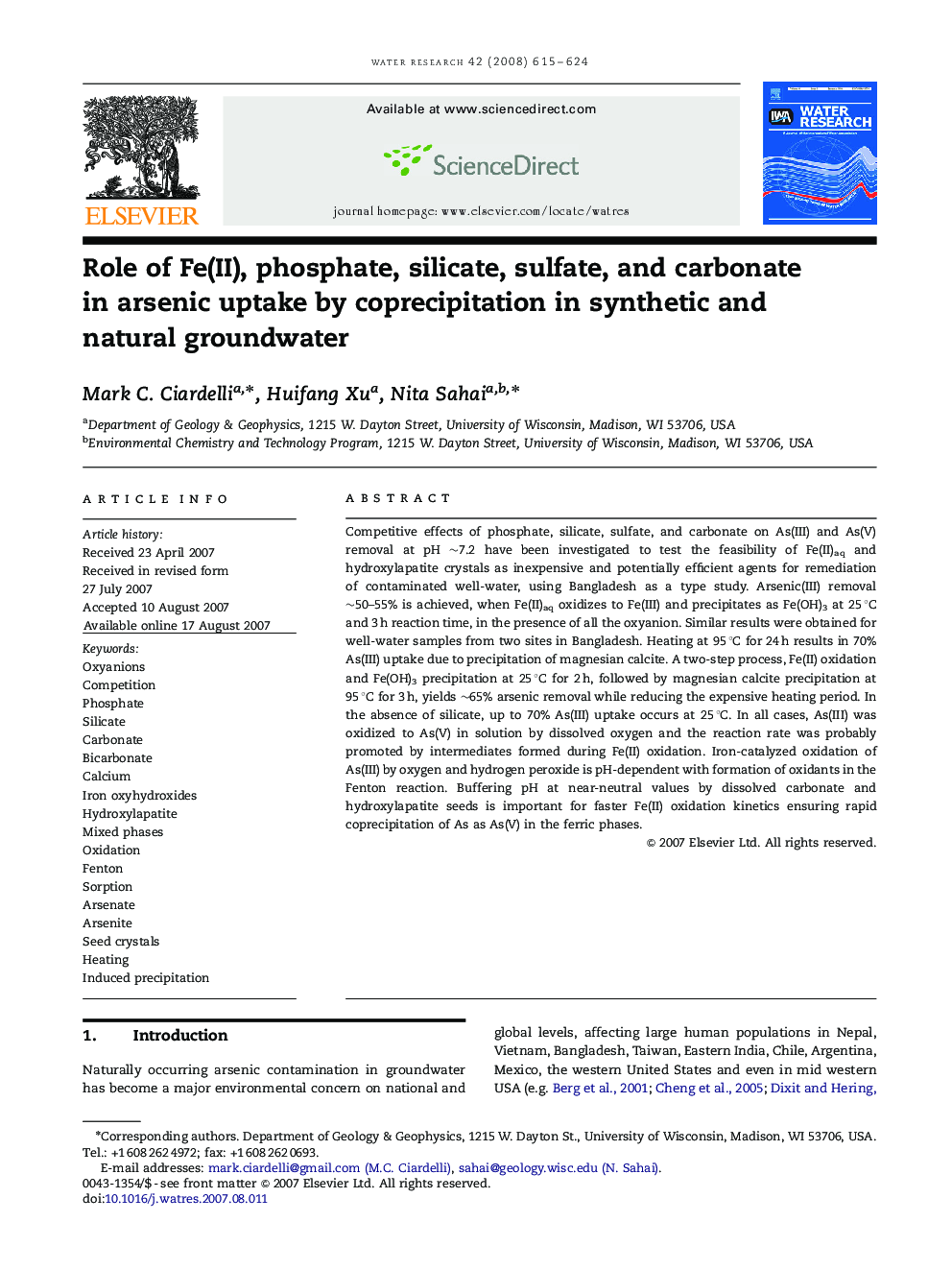| Article ID | Journal | Published Year | Pages | File Type |
|---|---|---|---|---|
| 4485211 | Water Research | 2008 | 10 Pages |
Competitive effects of phosphate, silicate, sulfate, and carbonate on As(III) and As(V) removal at pH ∼7.2 have been investigated to test the feasibility of Fe(II)aq and hydroxylapatite crystals as inexpensive and potentially efficient agents for remediation of contaminated well-water, using Bangladesh as a type study. Arsenic(III) removal ∼50–55% is achieved, when Fe(II)aq oxidizes to Fe(III) and precipitates as Fe(OH)3 at 25 °C and 3 h reaction time, in the presence of all the oxyanion. Similar results were obtained for well-water samples from two sites in Bangladesh. Heating at 95 °C for 24 h results in 70% As(III) uptake due to precipitation of magnesian calcite. A two-step process, Fe(II) oxidation and Fe(OH)3 precipitation at 25 °C for 2 h, followed by magnesian calcite precipitation at 95 °C for 3 h, yields ∼65% arsenic removal while reducing the expensive heating period. In the absence of silicate, up to 70% As(III) uptake occurs at 25 °C. In all cases, As(III) was oxidized to As(V) in solution by dissolved oxygen and the reaction rate was probably promoted by intermediates formed during Fe(II) oxidation. Iron-catalyzed oxidation of As(III) by oxygen and hydrogen peroxide is pH-dependent with formation of oxidants in the Fenton reaction. Buffering pH at near-neutral values by dissolved carbonate and hydroxylapatite seeds is important for faster Fe(II) oxidation kinetics ensuring rapid coprecipitation of As as As(V) in the ferric phases.
